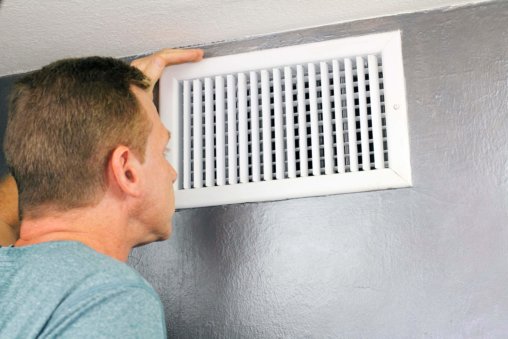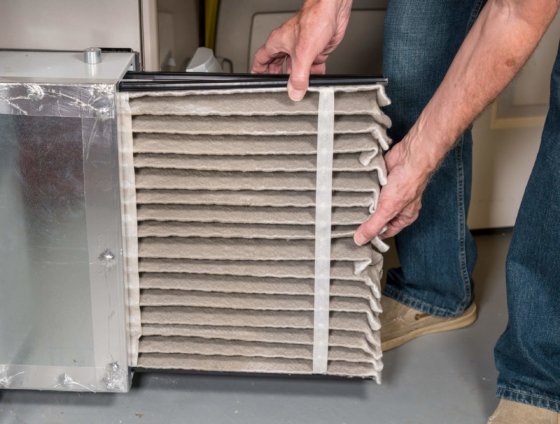Tips For Fixing Uneven Heating in Your Home
If you’re like most homeowners, your heating system is connected to one thermostat in your home. When you set a temperature on your thermostat, all the rooms in your home should be around the same temperature that you have set. If you’re starting to notice that certain rooms in your home are colder than others, it could be due to a number of different issues.
Aging HVAC System
If you have noticed that this problem has developed over a period of months, then the most likely cause of your uneven heating is an aging heating system. As your heating system reaches the end of its usable life span, it produces less heat. With less heat being produced, you’re likely to notice that only the rooms closest to your furnace are making it to an adequate temperature. The rooms farthest from your furnace will be those with the coldest temperatures. To remedy this problem, you need to upgrade your existing heating system.
System Short Cycling
When your heating system is running correctly, it will turn on and run through an entire heating cycle before it drops off. This helps to ensure adequate heating for your home. Whenever there is a problem with your HVAC system, it can result in short cycling. This is described as your heating system turning on and back off before a single heating cycle has been completed. Short cycling can be caused by a number of different factors, so it’s best to contact one of our service technicians to determine the root cause of your short cycling issue. Once you fix that issue, your heating system should go back to producing heat evenly throughout your entire home.
Poor Home Design
It’s not uncommon for a home builder to not fully take into account the home’s heating system when it comes to specialty factors. If your home has unique design features like a vaulted ceiling, a wall for windows, or is even a multi-level home, it can create difficulty for a typical HVAC system. For example, if you have a multi-level home, the upstairs will always be warmer than the downstairs. This is due to the natural quality of heat rising. If you have poor home design features, consider talking to one of our HVAC technicians to help figure out a viable solution to better heat the cold spots in your home.
Unwanted Air Drafts
Over time, air drafts can develop near windows and doors. These drafts let the cold air seep into your home and will make certain areas feel much colder than others. In the rooms that you’re noticing are colder than others, take a few moments and check around the windows and doors for any air leaks. If you find air drafts, use weatherstripping or similar material to block out that unwanted cold air. This simple remedy should take care of preventing cold air from accessing that room and allow it to heat up to the same temperature as other rooms in your home.
Obstructed and Closed Vents
When your HVAC system is working optimally, the warm air from your furnace is delivered to each room of your home via its supply vent. Then, the cold air is pulled in the return vent and goes through your furnace to be heated. Whenever any of the vents in your home are closed or obstructive, it can prevent heat from reaching those rooms. Additionally, it can mess with the specific pressures inside of your ventilation system that regulate how heat is delivered to all the rooms in your house.
Fortunately, an obstructed or closed vent is a very easy fix. Take a few moments and walk around each room of your home. Make sure that you locate the vents, move any obstructions that are in their way, and open any vents that are closed.
Improperly Maintained Heating System
Your heating system needs to be serviced every year by a professional. If you skip over this service, it can result in malfunctions of the internal components of your heating system. This can cause a number of different issues that can lead to uneven heating throughout your home. If you know that you haven’t gotten regular maintenance performed on your system, it’s time to call our service technicians to do so.
Clogged Air Filter
One of the most common problems that homeowners run into when it comes to uneven heating is a clogged air filter. Whenever the air filter on your HVAC system gets clogged, it’s much harder for air to be forced through it. This can lead to warm air getting delivered to the rooms closest to your furnace and cold air remaining in the distant ones. By simply pulling out the clogged filter and replacing it with a new one, you can solve the uneven heating issue in no time.
Undersized Heating System
Another common reason that you may notice uneven heating throughout your home is that you have an undersized HVAC system. When your system isn’t putting out enough heat to meet the needs of your home, the heat is only going to reach the areas closest to your furnace. The rooms farthest from your furnace aren’t going to be able to receive that heat.
Determining if your heating system is undersized is fairly simple to do with the right formula. Heating experts recommend that homes in the Sacramento region have a heating system that can output 40 BTUs per square foot of space. To determine the necessary heating capacity of your furnace, all you need to do is multiply the total square footage of your home by 40.
Compare this number to the heating output of your current heating system. If your existing furnace has a lower heating capacity than what you’ve determined the needs are for your home, then you have an undersized heating system. The best fix to this issue is to upgrade to a more powerful heating system that can handle the demands that your home requires.
Leaks and Gaps in Ductwork
Warm air from your furnace is forced into the ductwork that runs throughout your home. Over time, your ductwork can start to pull apart due to natural expansion and contraction as well as physical damage. When this happens, leaks form in your ductwork. The hot air that comes out of your furnace and into your ducting can easily escape through all those leaks and end up in your wall or floor cavities.
The more gaps your system develops, the less heat from your furnace is actually going to be delivered to the rooms in your home. To fix this annoying issue, it’s best to have your ductwork properly sealed by a licensed professional. When your ductwork is all sealed up, the warm air from your furnace can’t escape. Rather, the warm air will be delivered to all the rooms in your home.
High-Quality Heating Services
Crystal Blue Plumbing offers high-quality heating services for the entire Sacramento, CA area. Our furnace repair options are second to none. We can also assist with your cooling, plumbing, ducting, indoor air quality, dehumidifier, humidifier, commercial, ductless, and attic fan needs. Contact us today to request assistance from our knowledgeable service technicians.








